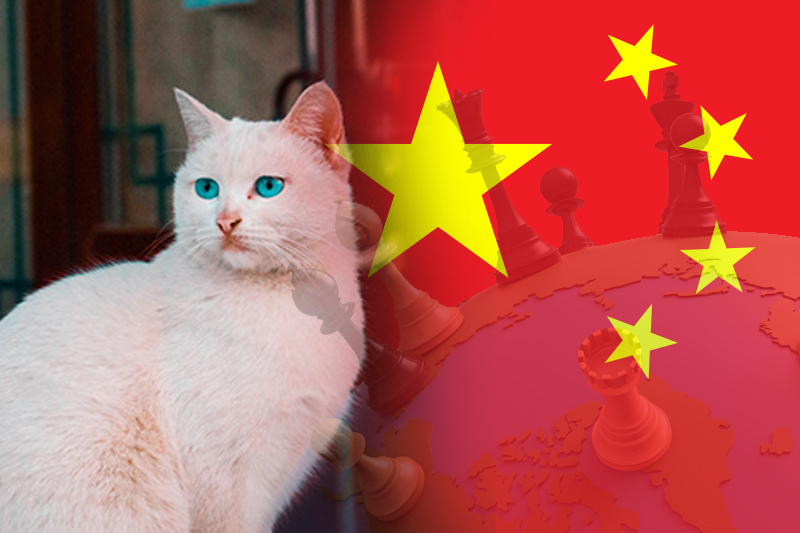
Hutong Cat- A name Or Geopolitical Power?
Are you familiar with the Hutong Cat?
This feline breed has a unique history that is deeply tied to geopolitical power. It’s fascinating how an animal can be so intertwined with the political landscape of a country. In this blog post, we’ll explore the origins and significance of the Hutong Cat, its role in shaping China’s past and present, and what lies ahead for this beloved creature.
Join me on this exciting journey as we unravel the mystery behind one of China’s most intriguing cats!
What is a Hutong Cat?
The Hutong Cat is a breed of feline that has been around for centuries in China. This type of cat is known for its distinctive appearance, which includes short legs and round faces. The name “Hutong” comes from the narrow alleys in traditional Chinese neighborhoods, where these cats were often seen wandering.
The Hutong Cat’s unique features are not just for show; they serve a practical purpose. Their short legs make them better suited to navigating the narrow alleyways that give them their name, while their round faces allow them to see more clearly in all directions.
These cats have long been favored by Chinese families as pets because of their friendly and affectionate nature. It’s said that owning a Hutong Cat brings good luck and fortune to a household.
As with many things in life, there are controversies surrounding this beloved feline breed. Some critics claim that excessive breeding has led to health problems among some individuals within the breed. However, advocates argue that responsible breeding can help ensure the continued existence of this fascinating creature for generations to come.
In summary, the Hutong Cat is an iconic symbol of traditional Chinese culture and its people’s love for animals as companions. Its distinct characteristics have made it stand out from other breeds worldwide!
The History of the Hutong Cat
The history of the Hutong Cat is a fascinating one that dates back to ancient China. The term “Hutong” refers to narrow streets or alleys in Beijing, which were once lined with traditional courtyard homes. These alleyways were often home to stray cats who roamed freely in search of food and shelter.
Over time, these cats became an integral part of daily life for many Chinese people who lived in the Hutongs. They provided companionship, and pest control, and even served as protectors against evil spirits.
However, during the Cultural Revolution in China from 1966-1976, owning pets was considered bourgeois and frowned upon by the government. Many Hutong Cats were either abandoned or killed during this time as a result.
It wasn’t until recent years that efforts were made to restore the presence of Hutong Cats in Beijing’s alleyways. There are now several organizations dedicated to rescuing and caring for these beloved felines.
Today, the Hutong Cat remains an important symbol of traditional Chinese culture and serves as a reminder of our connection to nature and animals.
Keep Reading
Geopolitical Power and the Hutong Cat
Geopolitical power and the Hutong Cat may seem like an unlikely pair, but there is a fascinating connection between the two. The term “Hutong” refers to the narrow lanes that form traditional residential neighborhoods in Beijing, China. These alleyways are where the domesticated felines known as Hutong Cats originated.
In recent years, China has been making great strides toward increasing its geopolitical power on the world stage. One way they have done this is by using their soft power through cultural exports such as food, music, and yes – even cats! The popularity of Hutong Cats has spread beyond China’s borders and into other countries, leading to a growing interest in Chinese culture.
Furthermore, owning a Hutong Cat can be seen as a status symbol for those who want to showcase their appreciation for Chinese culture or affiliation with China itself. This exemplifies how seemingly small things can contribute to larger political narratives.
As these cute creatures continue to gain popularity worldwide and become more widely recognized symbols of Chinese cultural heritage, it will be interesting to see how they play into China’s future geopolitical strategies.
The Future of the Hutong Cat
The Hutong Cat has a rich history and a unique story to tell, but what about its future? As the world continues to change, how will this rare feline breed fare in the years to come?
One thing is for sure: the Hutong Cat’s popularity is on the rise. More and more people are becoming aware of these cats and their fascinating origins. With increased attention comes greater demand, which could mean good things for the future of the breed.
However, with that, increased demand also comes potential issues. As more people seek out Hutong Cats as pets, there may be concerns about breeding practices or unethical sales practices. It will be important for responsible breeders and sellers to ensure that these cats are being treated well throughout their lives.
It’s possible that we may even see an increase in conservation efforts around preserving the lineage of these cats. This would involve careful breeding practices and potentially even legislation around protecting them from exploitation.
While it remains to be seen exactly what lies ahead for this fascinating cat breed, it seems likely that they will continue to grow in popularity and become an increasingly important part of our cultural landscape moving forward.
Conclusion
The Hutong Cat is not just a mere feline breed but an embodiment of China’s rich history and culture. Its name alone has deep roots in Chinese tradition and symbolizes the country’s geopolitical power.
As we move forward into the future, it’s important to preserve these cultural artifacts that have stood the test of time. The Hutong Cat serves as a reminder of how far China has come and its bright future.
Whether you’re a cat lover or simply interested in learning more about different cultures, taking the time to appreciate what makes each breed unique can be informative and entertaining. So next time you see a fluffy feline with distinct features resembling that of ancient Chinese architecture, remember the Hutong Cat and all that it represents.




